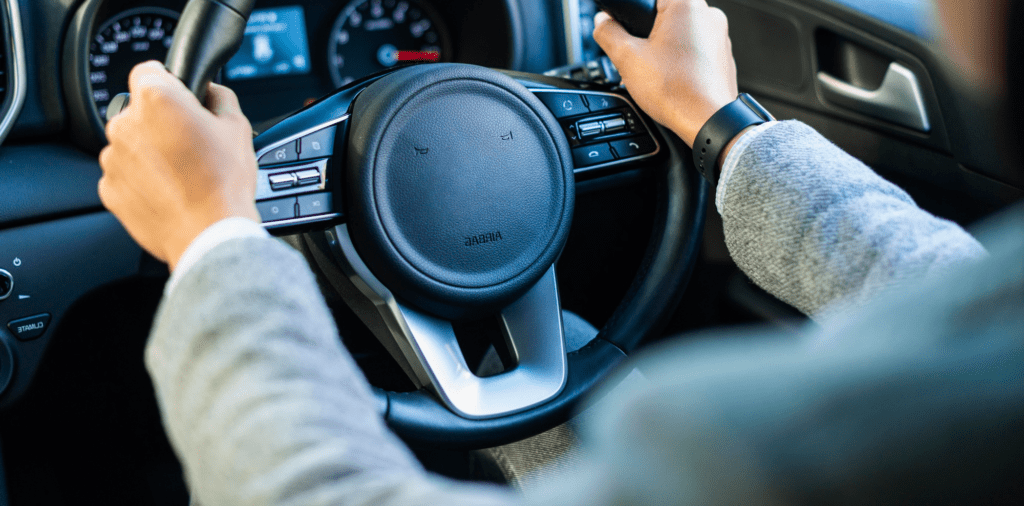
Adjusting your car steering wheel correctly is crucial for both your comfort and safety while driving. Not setting it up properly can result in poor posture and diminish your ability to drive safely.
In this guide, we’ll cover the essential steps to ensure your steering wheel is adjusted just right, allowing you to concentrate fully on the road ahead.
For added convenience, we’ve also included a video tutorial to guide you through the process.
Setting Up Your Car Steering Wheel
Adjusting your car’s steering wheel is a straightforward process, requiring you to manipulate just a single manual control.
Located beneath the steering column, directly under the wheel, is a small lever. This lever, when pulled, allows for the modification of both the height and depth of your steering wheel, ensuring a comfortable and safe driving position.
Adjust Your Seat
Before tackling the steering wheel, it’s crucial to first set up your car seat correctly. An improperly adjusted seat could result in a steering wheel that’s too close or pedals that are out of reach.
- Use the lever or button on the side of your seat to adjust its height, ensuring clear visibility of the road ahead and behind.
- Modify the seat’s angle using a dial or button located on the side.
- Lastly, adjust the seat’s position forward or backward, using a bar or lever at the seat’s base, to ensure easy access to the foot pedals without needing to lean forward.
Position Yourself and Prepare
Now that your seat is adjusted, it’s time to focus on your positioning within the car.
- Sit back fully in your seat, with your shoulders against the backrest. Avoid leaning forward to reach the pedals or steering wheel.
- Place your hands on the steering wheel at either the 9 and 3 o’clock or 10 and 2 o’clock positions. If you find your arms overly stretched or your shoulders uncomfortably elevated or lowered to hold the wheel, adjustments to the wheel’s depth or height are necessary.
Adjust the Depth of the Steering Wheel
The steering wheel should be positioned to allow your hands to rest comfortably on it, with your arms slightly bent.
- To adjust the depth, locate and pull the lever underneath the steering wheel. This action unlocks the wheel for adjustment.
- Hold the steering wheel and push or pull to adjust its distance from you. Push it away if it feels too close, or pull it closer if it feels too far.
- Once satisfied with the depth, you can either re-engage the lever to test the position or leave it disengaged to adjust the height.
Adjust the Height of the Steering Wheel
Adjusting the steering wheel’s height is essential for both comfort and safety.
- If you’ve secured the lever after adjusting the depth, pull it again to modify the height of the steering wheel. It should be aimed towards your chest, approximately 10 inches away, ensuring that the airbag, in the event of a collision, offers optimal protection.
- During this adjustment, ensure that you can still see all warning lights and instrument gauges. If the steering wheel obstructs your view, adjust it accordingly.
- Once the adjustment is complete, secure the lever back in place, ensuring it lies flat against the column. Verify its security by attempting to move the wheel up and down.
Testing It Out
The Importance of a Test Drive
After making adjustments to your car’s steering wheel, the true test of their effectiveness comes when you begin driving. While stationary adjustments may seem ideal, the dynamics of driving can reveal a different story.

Safety First: Adjusting While Parked
Should you find the steering wheel too close, far, high, or low during your drive, it’s crucial to never adjust while the vehicle is in motion.
Attempting adjustments while driving could lead to a loss of control and potential accidents. If adjustments are necessary, find a safe place to pull over and make the changes with the car safely parked.
Correct Hand Position While Driving
Maintaining the correct hand position on the steering wheel is not only vital for vehicle control but also for your safety in the event of a collision.
Ensuring you’re holding the steering wheel properly can prevent serious injuries caused by the airbag upon deployment.
For instance, placing both hands at the 12 o’clock position could lead to severe harm if the airbag is activated.
Frequently asked questions
When it comes to the correct hand positions on the steering wheel, there are two main approaches recommended for drivers:
- 10 and 2: Position your left hand at the 10 o’clock spot and your right hand at the 2 o’clock position. This setup is often recommended by driving instructors for its balance of control and comfort.
- 9 and 3: Place your left hand at 9 o’clock and your right hand at 3 o’clock. This stance offers a slightly more relaxed grip while still ensuring good control of the vehicle.
The choice between these two positions ultimately depends on what feels most comfortable for you. The key is to maintain a posture that allows for safe and effective driving.
The optimal distance between you and the steering wheel is approximately 10 inches. Maintaining this space ensures that, in the event of a collision where the airbag deploys, you are less likely to sustain serious injuries from the impact. It’s crucial for both safety and comfort to adjust your seat accordingly.
Absolutely not! It is critically important that you never attempt to adjust your steering wheel while driving.
Doing so could lead to a loss of control of the vehicle, posing a serious risk not just to yourself but also to others on the road.
Always make any necessary adjustments before you start driving to ensure your safety and the safety of others.
A properly adjusted steering wheel should not cause you any discomfort, particularly in your shoulders and arms.
If you find that driving is leading to tension or discomfort in these areas, it’s a clear sign that adjustments are necessary.
Comfort is key to ensuring you can drive safely and effectively, so make sure your steering wheel position allows you to remain relaxed and in control.
Yes. During your first driving lesson, your instructor will introduce you to the cockpit drill. This crucial process ensures that the car is adjusted to fit you perfectly.
You’ll learn how to correctly set up not just the steering wheel, but also your car seat, seatbelt, headrest, mirrors, and other key components. This foundational knowledge is essential for both your comfort and safety on the road.


